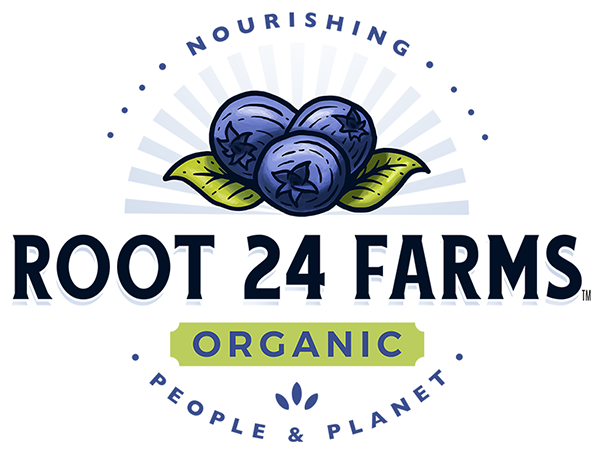Organic Blueberry FAQs
Basic Berry Questions
- Look for berries that are firm, dry, plump and smooth-skinned, with a silvery surface “bloom” and no leaves or stems.
- Ripe blueberries can be any size.
- Ripe blueberries are deep purple-blue to blue-black. Reddish or greenish blueberries aren’t ripe and won’t ripen once they are picked but you can use them in cooking. Or eat them if you enjoy a tart berry.
- Avoid soft or shriveled or moldy berries. Juice stains probably mean the berries have been crushed.
The high concentration of the antioxidant anthocyanin (a plant pigment) is what makes blueberries blue.
The fine white coasting is called a “bloom.” This is a waxy substance that occurs naturally. It is a sign of freshness. Berries without any bloom may have been jostled around quite a bit.
Bite a blueberry and you may notice a few tiny seeds. They are typically imperceptible.
Individually Quick Frozen (IQF) blueberries are, as the name implies, quick frozen individually in a specially designed chamber. This ensures that the frozen berries don’t clump together and can be used more like fresh berries.
We grow several different varieties of blueberries, each with their own characteristics. What you are tasting might be those differences, but likely have more to do with ripeness, maturity, and other factors that affect berry development on the farm.
Fresh blueberries are so popular that not much of the harvest is dedicated to juice production. Here at Root 24 Farms, we have complete control over our blueberry production and our product lines so that we’re able to choose what we dedicate to juice production.
Take them right back to the produce department where you found them! We want to be sure you have a great blueberry experience. The produce manager will let us know about the problem.
Frozen blueberries are available year-round, but are mainly processed in the peak of the season which is normally June to late August.
On the Farm
The cultivated Highbush varieties (like our Duke, Draper, and Calypso) are best suited for fresh eating and bold flavor. They are larger and fleshier. The lowbush varieties are grown in Northern Maine and parts of Canada.
Root 24 Farms organic blueberries are grown in Washington state and harvested from mid-June through mid-August. Other growing regions ripen at other times.
In the Kitchen
As a general rule, blueberry muffins should contain 33% fruit, or one pound of fruit for every two pounds of batter. Blueberries should be the last ingredient added to a muffin batter, just before the batter is poured into the muffin pan. Avoid over-mixing as it may cause breakage and color bleeding. Fresh, frozen or dried blueberries are the best forms of blueberries for muffins.
Freezing your blueberries is a great way to enjoy your fruit throughout the year. After you buy fresh blueberries, place them in a single layer on a cookie sheet. Be sure to not wash the blueberries before freezing. After they are frozen, transfer to an airtight plastic bag or freezer container and store. When you are ready to use your blueberries, take them out and wash prior to using.
Place an apple in a bag with your blueberries. The ethylene that the apple emits natural will help the blueberries ripen faster.

